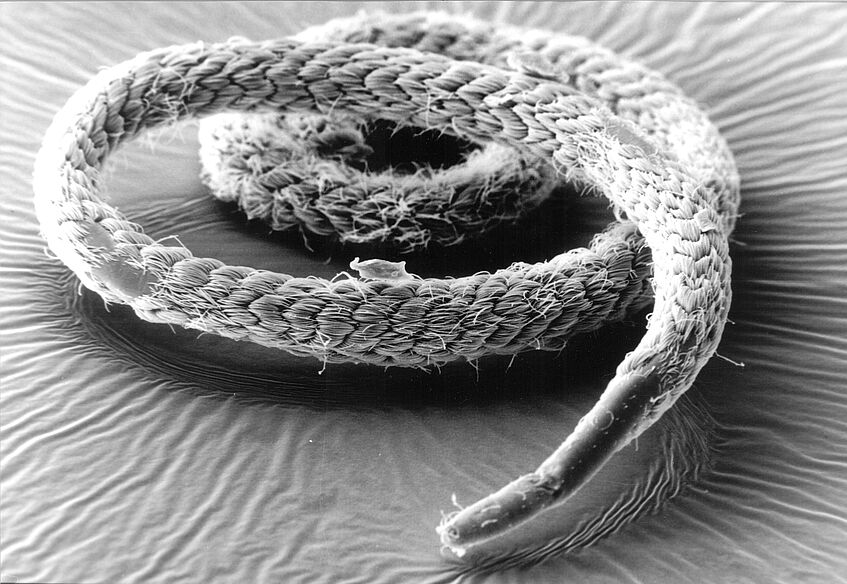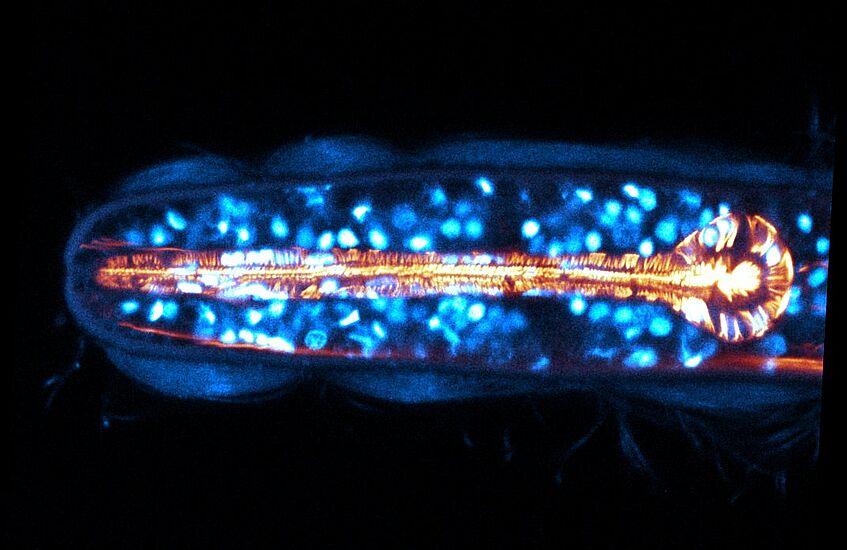
Symbioses between marine invertebrates and chemolithoautotrophic sulfur-oxidizing bacteria have evolved in many taxa, both animals and microbes. They are characteristic for deep sea habitats, such as hot vents and seeps where they form spectacular animal communities that have been studied in detail in the last four decades. Less spectacular but not less diverse are such symbioses in shallow water habitats. Here many of the invertebrate hosts belong to the meiofauna, microscopic animals less than one to a few mm in size. We study marine sediments that harbour a variety of these symbioses, such as mouthless catenulid flatworms (Paracatenula), mouthless siphonolaimid nematodes (Astomonema) and stilbonematine nematodes. The latter are the present focus of our group.

Stilbonematinae are obligatory associated with bacterial ectosymbionts. These symbionts are chemolithoautotrophic sulfur-oxidizing gammaproteobacteria, which coat the cuticle on the body surface of the worms in a host-species specific manner. There is molecular evidence that each host species carries one specific symbiont species. The bacteria are a (or probably the exclusive) source of food for the worms, which in turn provide their symbionts alternately with electron donors and acceptors by migrating through the chemocline in marine sandy sediments. Although the symbiosis has defied cultivation so far, several species have become model systems for fundamental biological questions, such as host/symbiont recognition and specificity, partner fidelity and exotic bacterial division mechanisms. Despite the interest in physiology and cell biology of the symbiosis, the taxonomy, phylogeny and biogeography of the Stilbonematinae is still poorly known.
Present project:
Phylogeny and biogeography of the Stilbonematinae
